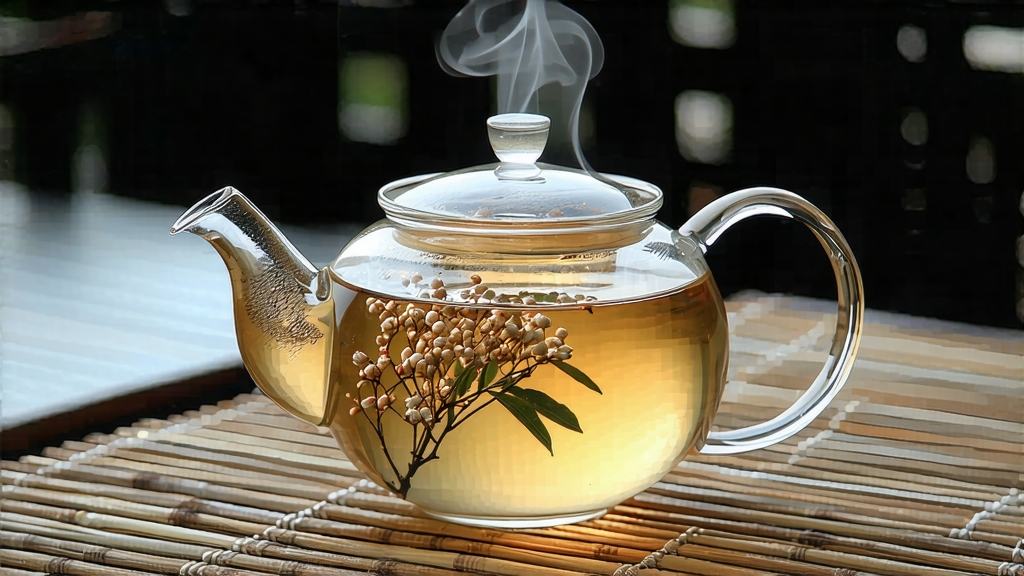
Among the six great families of Chinese tea, white tea is the least theatrical: no tossing in hot woks, no rolling under heavy pressure, no charcoal roasting theatrics. Its poetry is written in silence, in the slow evaporation of moisture while the leaf still breathes. And within that quiet lineage, one cultivar stands as the purest, most luminous expression of the art—Bai Hao Yin Zhen, literally “White Hair Silver Needle.” Named for its silhouette—straight, slender buds cloaked in silvery down—the tea is plucked only between mid-March and early April, when the first viable buds of the Da Bai cultivar awaken in the coastal mountains of northern Fujian. To international drinkers who meet it for the first time, Silver Needle can feel almost too delicate to be real, like tasting the ghost of a flower. Yet behind that fragility lies a history of tribute, pharmacopeia, and meticulous craft that stretches back to the Song imperial court.
Historical whispers
The first verifiable record of “white tea” appears in the Song-era treatise Da Guan Cha Lun (1107 CE), where Emperor Huizong praises a tea whose buds were “silver outside, jade inside.” Whether that tea was the direct ancestor of today’s Silver Needle is debated, but by the Ming dynasty local gazetteers note that Fuding county presented “white down buds” as tribute. Caravans carried the compressed cakes southwest to the Tea-Horse Road; some scholars believe European travelers encountered these pale cakes in the late 1600s and mistook them for withered wild leaves, planting the seed for the Western category “white tea.” The shift from cake to loose needle shape occurred during the Qing, when improved withering sheds allowed farmers to preserve the intact bud without compression. Thus Silver Needle, though ancient in spirit, assumed its modern form only in the mid-19th century.
Terroir: where mountain mist meets East China Sea
Fuding and neighboring Zhenghe county share a maritime-monsoon microclimate: mild winters, thick fog, red-yellow lateritic soil rich in quartz and trace minerals. The Da Bai (Big White) tea tree—Camellia sinensis var. sinensis cv. Fuding Da Baihao—has unusually large buds, 2.5–3.0 cm long when fully mature, storing high levels of amino acids, especially L-theanine, which translates into the tea’s hallmark sweet-broth umami. Because the buds are picked before the leaf unfurls, polyphenol content is lower than in green or black teas, yielding a liquor that is gentle on the stomach yet surprisingly long on finish.
Plucking ritual: one dawn, one bud
The picking window lasts roughly fifteen days. Ideal meteorological conditions read like a haiku: clear dawn, 18 °C, 70 % humidity, light breeze. Experienced pickers use only the thumb and index finger, snapping the bud at its base with a barely audible click to avoid bruising. A full kilogram of finished Silver Needle requires roughly 30,000 buds, all gathered before ten o’clock so that morning dew acts as natural hydration during the long wither. The pluckers’ baskets are shallow bamboo trays lined with hemp cloth; depth never exceeds 5 cm to prevent compression heat.
Craft: the art of doing almost nothing
Once transported to the withering loft, the buds are laid in a single layer on bamboo screens raised 80 cm above the ground. For the next 48–72 hours they rest, untouched, while mountain wind drifts through louvered walls. Ambient temperature is kept below 28 °C; relative humidity drifts between 65 % and 75 %. Enzymatic oxidation proceeds at a glacial pace, turning catechins into delicate theaflavins and developing a honeyed aroma that connoisseurs liken to loquat blossom. At dusk on the second day, the tea master lifts a handful toward a kerosene lantern, inspecting the color shift from jade-green to silver-gray and bending the bud to test brittleness. Only when the moisture content falls to 8–10 % does he commit the buds to a gentle 15-minute bake at 40 °C, halting oxidation while preserving the velvet down. No rolling, no shaping—the needle remains anatomically perfect, a botanical specimen suspended in time.
Grading & authenticity markers
Authentic Silver Needle exhibits three visible cues:
- Uniform needle length (2.5–3 cm) with an unbroken tip.
- Dense trichomes that shimmer